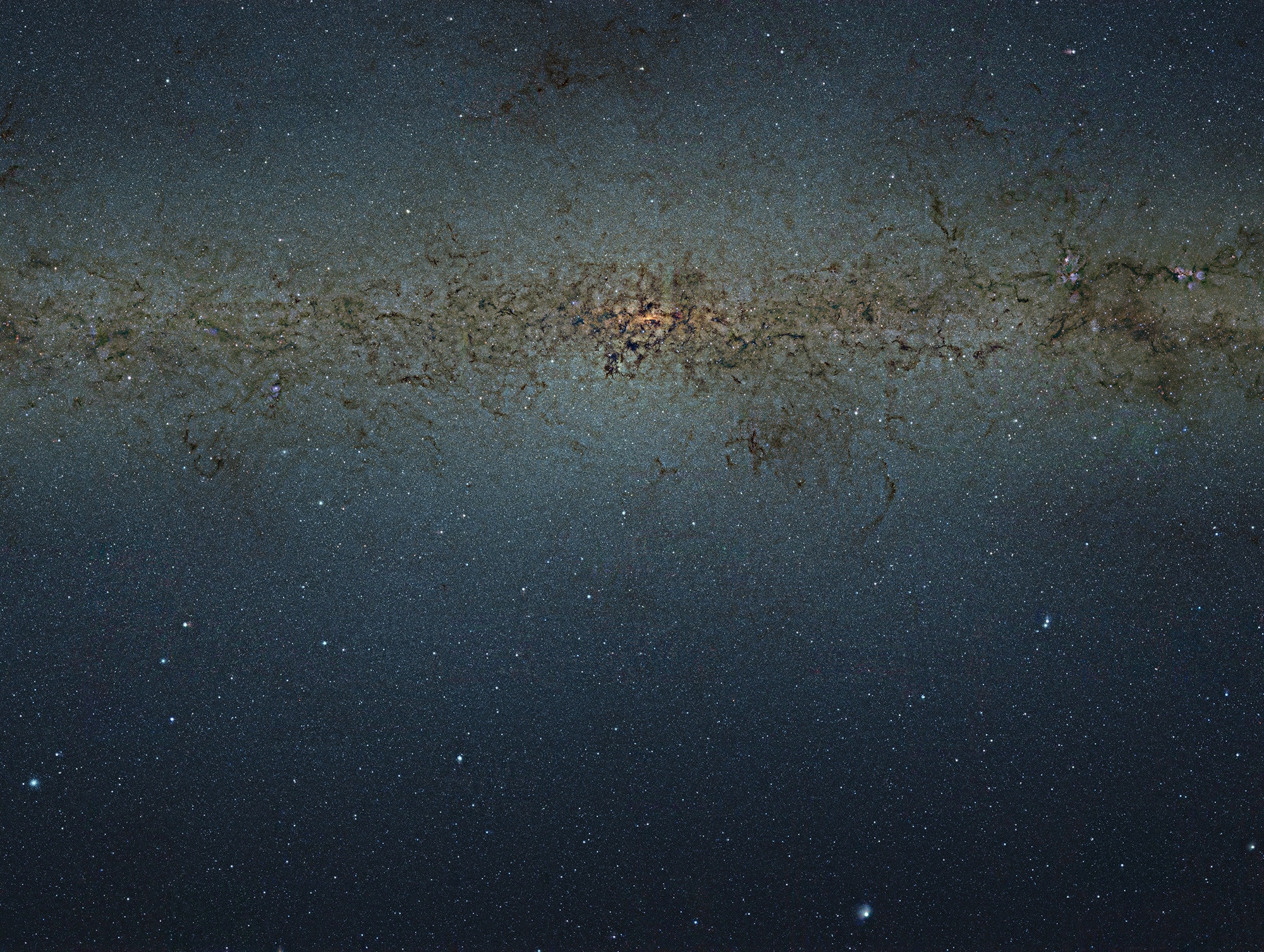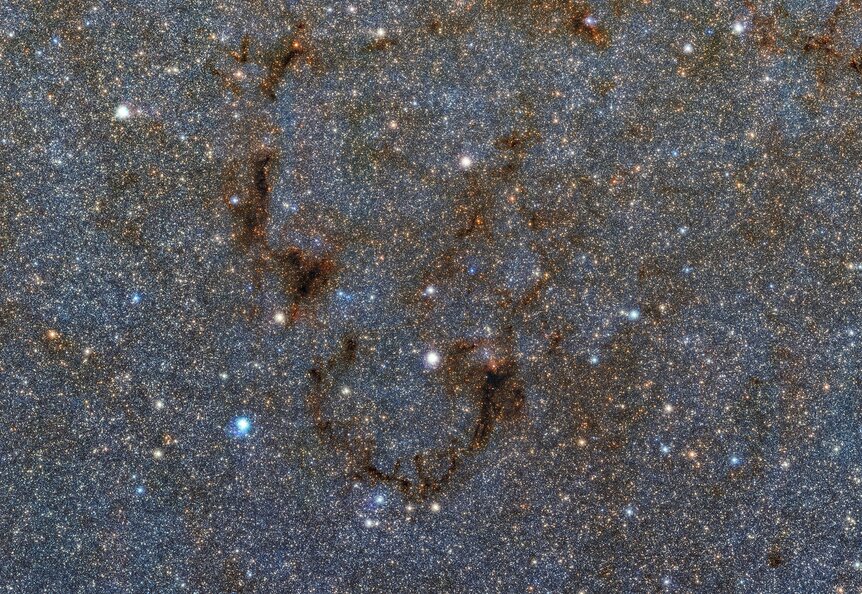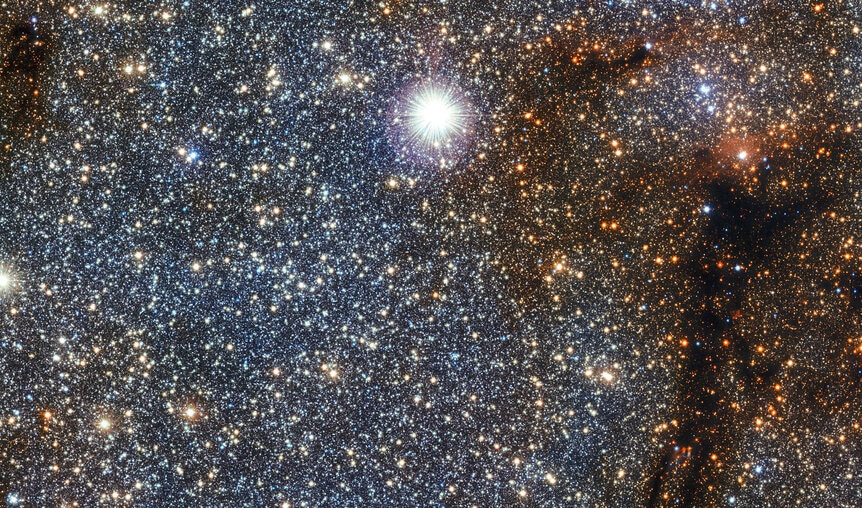Create a free profile to get unlimited access to exclusive videos, sweepstakes, and more!
My god. It *is* full of stars.

I've been writing a lot about the galactic center lately, but in my defense, it's a happening place. It's got a gigantic black hole, it's blasting out huge bubbles of gas so hot they emit X-rays, and of course there are a lot of stars there.
A lot.
It's actually hard to see them directly, because there's also a lot of dust between us and the galactic core, and that junk is opaque to visible light. We tend to see it in silhouette, clumps and clouds and streamers and filigrees, dark against the light coming from the myriad stars behind it.
But if you look in the infrared, things get clearer. Not perfectly clear; even though infrared light can pierce dust better, it's not 100% if the clot of interstellar grains is thick enough.
Still, combine a detector capable of seeing in the infrared with a telescope that's big enough — and located in the Chilean Atacama desert, where the skies are incredibly dark — and what you get is, well, cosmic magnificence.
THAT is a section of the sky around the galactic center in Sagittarius. Look at it! The dust is in long twisty filaments that are a wonder to behold.
This shot was taken by VISTA, the Visible and Infrared Survey Telescope for Astronomy, a 4.1 meter telescope with a 67 megapixel camera sensitive to infrared light. The colors you see in the shot aren't real; it's a combination of three filters in infrared displayed as blue, green, and red to mimic the colors our eyes see. But even the bluest of the three IR images is at a wavelength nearly twice as long as our eyes can see (to get technical, the three images are at 1.25, 1.65, and 2.15 microns, while the reddest light you can see is at roughly 0.75 microns).
It's a huge piece of the sky, too, stretching about 16° across or so, more than enough to fit 30 full Moons across it! The Milky Way galaxy is a flat disk, and we're inside it, so the dust appears to be stretched across the image in a line, the disk seen edge-on.
Now, here's a funny thing. See that blue glow all around the plane? You might think that's some sort of gas cloud, or reflected light, or something like that.
But it's not.
It's stars.
Don't believe me? Here's a zoom of the first image.
YE. GADS.
Look closely at the dust clouds. See how they aren't sharply defined, but fade out near the edges? And how the stars near those edges look redder? That's because the clouds really don't have sharp borders; they just get thinner as move away from their centers, as the Earth's atmosphere gets thinner the higher up you go, and doesn't have a hard and from edge.
So stars behind the cloud but near the edge as seen from Earth get dimmer, but aren't completely blocked. And because dust can block blue light better than red, the stars there look ruddier. Science!
This section of the bigger image is about 2" across, and comes from the left side below the midline; you can see the smiley-face-like dust filament in the wider shot. But even this isn't a full-blown zoom. Check this out:
That's from the part of the image just above the smiley face. And my heavens (so to speak): those stars. I don't know how many there are in this shot alone, but in the bigger smiley-face shot it could be millions.
And that is a small piece of the wider shot. The full wide shot is a mosaic composed of 9 freaking billion pixels of data! The full-scale image is a RAM crushing 108,199 x 81,503 pixels in size, and if you want to download it it'll set you back about 25 gigabytes.
But you don't have to do that! The European Southern Observatory put it up as a zoomable, pannable image you can explore. I had a lot of fun poking around in it. It was a little disconcerting, to be honest; because it's in the infrared all my usual landmarks (skymarks?) are missing, so I didn't really know where I was looking. Still, it's an amazing thing to zoom in, and in, and in, and just seeing more and more stars.
Every now and again I forget what it means to live in a galaxy with something like 200 billion stars. This image will give you a glimpse of it.
P.S. Wanna see more images from VISTA? I (and the ESO) gotchu.





























